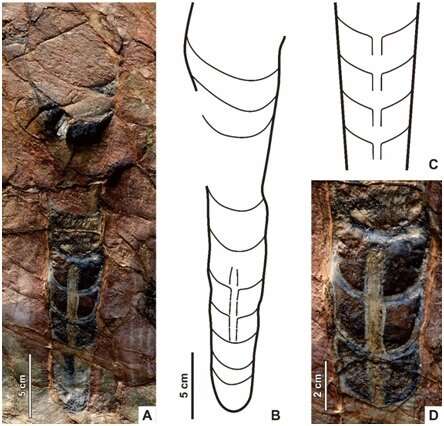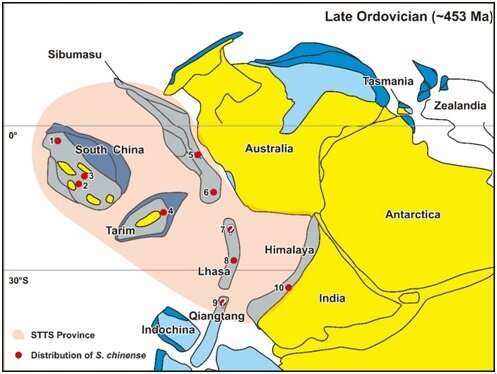Cephalopod Sinoceras chinense discovered outside China for the first time

Sinoceras chinense is a kind of extinct cephalopod mollusk that flourished in the late Ordovician. It is regarded as the index fossil of the Upper Ordovician Pagoda Formation on the Yangtze Platform of South China, with a likely age of early Katian.
S. chinense was previously only known from the Upper Ordovician of Chinese blocks/terranes, including South China, Tarim, Tibet and western Yunnan.
In January 2020, a Sino-Thai research team led by Dr. Fang Xiang from the Nanjing Institute of Geology and Paleontology of the Chinese Academy of Sciences (NIGPAS) and Prof. Clive Burrett from Mahasarakham University conducted field research in western Thailand and collected a large number of fossil specimens.
They discovered S. chinense in the Upper Ordovician strata, which is the first discovery outside China. The study was published in Palaeoworld on June 18.
These specimens were recorded in a geoconservation site named Nautiloid Site, located in western Thailand. Previously, these specimens were wrongly identified as actinocerids, leading to miscalculation of the geological time of the upper part of Tha Manao Formation.
The exact identification of S. chinense suggested that the age of the upper part of Tha Manao Formation was the early Katian of Late Ordovician, providing evidence for the stratigraphic correlation between the upper part of the Tha Manao Formation in Thailand and the Pagoda Formation (and contemporaneous units) in China.

Western Thailand, combined with Baoshan region of western Yunnan, was located on Sibumasu Terrane during the Early Palaeozoic. The confirmed identification of S. chinense in Thailand is the first record in Thailand and also the first report in a region outside of China.
Moreover, the discovery of the species in the Sibumasu Terrane provides strong support for the palaeogeographic reconstruction and pronounced palaeobiogeographic changes from the Middle to Late Ordovician among the peri-Gondwanan regions.
More information: Xiang Fang et al. Sinoceras chinense (Foord, 1888) in western Thailand: first identification outside China, Palaeoworld (2020). DOI: 10.1016/j.palwor.2020.06.004
Provided by Chinese Academy of Sciences




















